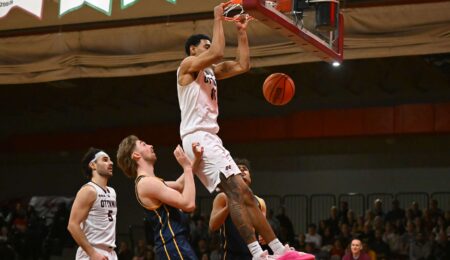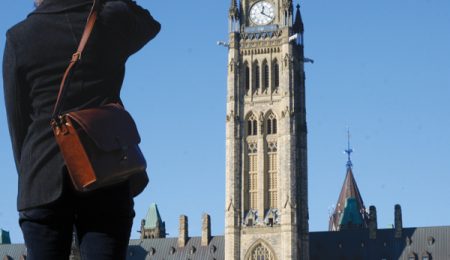A key point of difference from the U.S. provides better training for future pros
With draft day just around the corner, the best players in Canadian Interuniversity Sport (CIS) football—including some of the University of Ottawa’s own Gee-Gees—are looking to fulfill their pro football dreams.
However, for these Canadian athletes, a selection on draft day doesn’t have to mean the end of their collegiate careers.
May 10 marks the day of the infamous—though some might call it “quirky”—CFL Canadian Draft.
The head-scratching process has perhaps gained notoriety for being rife with pitfalls, commonly losing top-notch Canadian talent to the NFL Draft, and losing mediocre talent to traditional career paths.
With all of its shortcomings, one major positive element of the CFL Draft, often gets overlooked.
In co-operation with the CIS, the CFL Draft offers a sort of security blanket for its Canadian college draftees. It’s a safeguard, so to speak, which allows for CFL-drafted Canadian collegiate athletes to return to university even after being drafted, if they so choose, and continue playing football at the CIS level.
In other words, declaring for the CFL Draft and being drafted by a CFL team doesn’t spell the end of an athlete’s CIS football career.
Such a system in place carries with it several securities and benefits from a player’s perspective, chief among them being that it eliminates the major risk that both Canadian and American college athletes take when electing to go pro.
A CIS athlete who declares for the CFL Draft and is selected does not run the risk of abandoning university and giving up their scholarships, only to be cut by the CFL team that drafted them.
When a National Collegiate Athletics Association (NCAA) football player declares for the NFL Draft, whether they are drafted or not, their college football career is over.
From a development standpoint, this system benefits CFL draftees such that they may continue to train and play at the university level, and return to the pro team that holds their rights when they are fully developed and prepared to make that jump. In this way, a ‘farm-system’ of sorts is created between the CFL and its players still in the CIS.
Furthermore, while players are still in school they are allowed to sign training camp and preseason contracts with CFL teams, allowing them to benefit from the coaching and players at a higher level.
This is perk to the CFL Draft system that Gee-Gees quarterback Derek Wendel has taken advantage of for the previous two seasons with the Ottawa RedBlacks.
If Wendel is any indication to the success of the system it would be telling, as the fourth-year tossed a record-breaking 3,136 yards and 24 touchdowns last season.
The player-friendly and easygoing nature of the CIS and the CFL Draft calls attention to their polar opposite American counterparts: the cutthroat business of the NCAA and NFL Draft.
Already known for its blatant disregard of its athletes—a multi-billion dollar industry fuelled by unpaid, uncompensated, and often mistreated athletes—the NCAA manages to push the envelope even further when it comes to exploiting its football athletes and NFL hopefuls.
The CFL Draft, as baffling as it may be, makes more sense in at least one respect: the treatment of its draftees.





